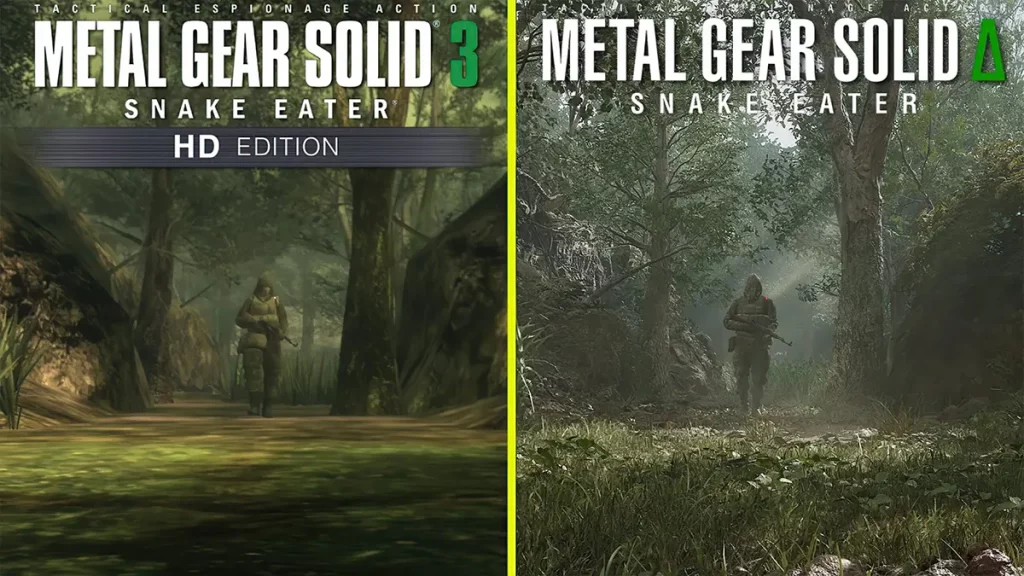In the realm of gaming, few franchises carry the weight and legacy of Metal Gear Solid. Hideo Kojima’s masterpiece series has captivated players with its intricate narratives, stealth mechanics, and unforgettable characters.
As the gaming industry advances, so do the opportunities to revisit and enhance these classic titles. This brings us to the much-anticipated release of “Metal Gear Solid Delta: Snake Eater Remake,” a project that promises to redefine the experience of espionage and storytelling once again.
The original Metal Gear Solid 3: Snake Eater, released in 2004, was a groundbreaking addition to the series. Set during the Cold War era, players took on the role of the iconic operative, Solid Snake, as he embarked on a mission to thwart a catastrophic nuclear threat.
The game’s exceptional blend of stealth, survival, and emotional depth made it a beloved entry in the franchise. Now, with the advent of technology capable of bringing new life to classic titles, fans are about to witness an unparalleled revival.
Old Graphics vs. Remake
“Metal Gear Solid Delta: Snake Eater Remake” is not just a graphical facelift; it’s a full-scale reimagining of a gaming classic.
Developed by a collaboration of talent at Bluepoint Games and Kojima Productions, the remake combines modern technology with the core essence of what made Snake Eater so remarkable.
From the dense jungles to the intricate characters, every element has been crafted with meticulous attention to detail.

The visual enhancements are immediately striking. Environments are lush and vibrant, with the dense foliage of the jungle teeming with life. The character models exhibit an astonishing level of realism, allowing players to connect with the emotions of the characters in a way that was previously unattainable.
The game’s iconic moments, such as Snake’s ladder climb accompanied by the hauntingly beautiful soundtrack, are revitalized with modern graphics, sound, and game design.

However, it’s not just the aesthetics that have been revamped. The gameplay mechanics have also undergone a transformation. The new adaptive stealth system challenges players to adapt to changing conditions, ensuring that every encounter feels fresh and dynamic. The integration of the DualSense controller’s features on modern consoles enhances immersion, allowing players to feel the tension of crawling through the undergrowth or the adrenaline rush of a firefight.

While the remake remains faithful to the original narrative, it introduces new layers that enhance the storytelling experience. Additional cut scenes and voice acting provide deeper insights into characters’ motivations and relationships, making the emotional moments even more impactful. The narrative innovations resonate particularly with players who have cherished the story for years, as well as newcomers discovering it for the first time.
“Metal Gear Solid Delta: Snake Eater Remake” is more than just a nostalgic trip down memory lane; it’s a testament to the timeless nature of exceptional game design.
By marrying the innovations of the present with the brilliance of the past, the remake embodies the idea that gaming can be a form of art that evolves across generations.
As players embark on this new journey through the jungles and intrigues of the Cold War, they can anticipate an experience that not only pays homage to the original but also sets a new standard for what a remake can achieve.
In an exciting gaming landscape filled with endless possibilities, “Metal Gear Solid Delta: Snake Eater Remake” emerges as a glorious testament to the power of rejuvenating cherished classics for the enjoyment of modern players.
With its blend of nostalgia, innovation, and sheer craftsmanship, the game beckons both longtime fans and newcomers to once again step into the shoes of the legendary Solid Snake and unravel the enigmatic world of Metal Gear.



Comments